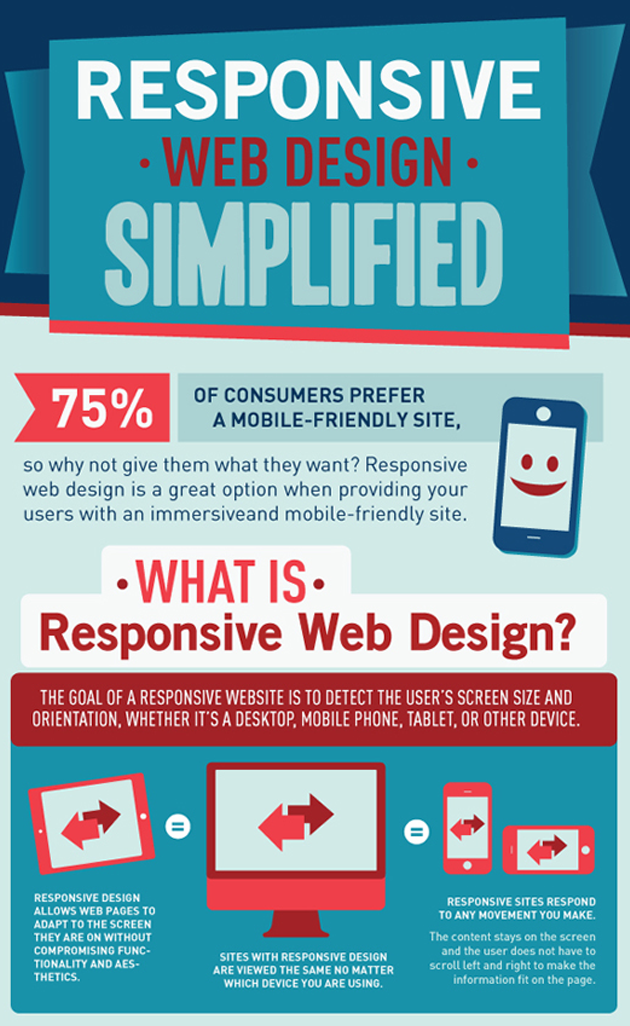Discover The Fundamentals Of Receptive Web Design And Make Certain A Smooth User Experience Across All Tools
Discover The Fundamentals Of Receptive Web Design And Make Certain A Smooth User Experience Across All Tools
Blog Article
Author-Rees Overby
If you want your web site to function well on all tools, find out the basics of receptive website design. Guarantee your website looks good on any screen size. Keep mobile individuals satisfied and involved. Boost your site's presence on search engines. Google favors mobile-friendly web sites. Usage liquid grids, versatile images, and media questions. Ensure your content is accessible on all devices. Test your website on different displays for the best user experience. Mastering these principles is crucial for reliable receptive style. Discover even more about improving your website's use with receptive layout techniques.
Value of Responsive Website Design
Understanding the relevance of receptive website design is important in today's digital landscape. Your website needs to be obtainable and user-friendly across various tools, including desktop computers, laptop computers, tablets, and smartphones. With the increasing use of mobile phones for net browsing, having a receptive design is no more just a nice-to-have feature but a necessity.
When your site is receptive, it adjusts effortlessly to different display dimensions and resolutions, providing an optimum viewing experience for your visitors. This adaptability makes certain that your material continues to be legible, images are effectively displayed, and navigation is easy to use no matter the device being used. By catering to the demands of mobile individuals, you can improve user fulfillment, increase involvement, and eventually drive conversions.
In today's affordable on the internet atmosphere, having a responsive site can likewise positively influence your online search engine positions. Search engines like Google prioritize mobile-friendly websites, so by accepting responsive style, you not just enhance the customer experience but additionally increase your exposure and reach online.
Key Principles of Responsive Layout
To successfully implement receptive layout on your website, concentrate on mastering the vital concepts that control its flexibility throughout various tools. One fundamental principle is fluid grids, which includes utilizing family member units like portions as opposed to repaired systems like pixels for format style. This enables elements to resize proportionally based upon the screen size.
An additional essential concept is versatile photos and media, where pictures and videos are sized in a way that gets used to the container they remain in, ensuring they maintain their proportions on different devices.
In addition, media questions play a crucial duty in receptive layout by enabling you to use different designs based on the tool's qualities, such as screen width. It's essential to prioritize web content and functionality to ensure that customers can access one of the most crucial details no matter the gadget they're using.
Implementing Responsive Design Techniques
Begin by including responsive design methods into your website to maximize its efficiency across various gadgets. mouse click the up coming website is making use of liquid grids that enable elements to resize proportionally based upon screen dimension. This guarantees a consistent format and individual experience.
An additional vital strategy is using adaptable photos that can adjust to various screen sizes without losing quality or damaging the layout. By establishing max-width: 100% in CSS, photos will scale suitably.
Additionally, utilize media questions to apply various styles based upon the device's qualities, such as display width or positioning. This aids tailor the style for particular gadgets or screen sizes.
Implementing a mobile-first approach, where you prioritize designing for smart phones prior to desktops, can also enhance responsiveness.
Evaluating simply click the following website page on different gadgets and display dimensions is important to make sure that the layout responds well across the board. By incorporating these receptive layout techniques, you can produce an internet site that delivers an ideal customer experience regardless of the device being utilized.
Final thought
Now that you comprehend the basics of responsive web design, you can guarantee your website looks fantastic on any device. Keep in mind, responsive layout is like a chameleon, adjusting seamlessly to its surroundings.
By concentrating on vital principles and executing methods, you can create an user-friendly and visually enticing web site that involves your audience properly.
Keep exercising and refining your skills to stay ahead in the ever-evolving globe of website design.
